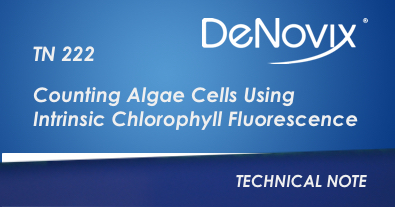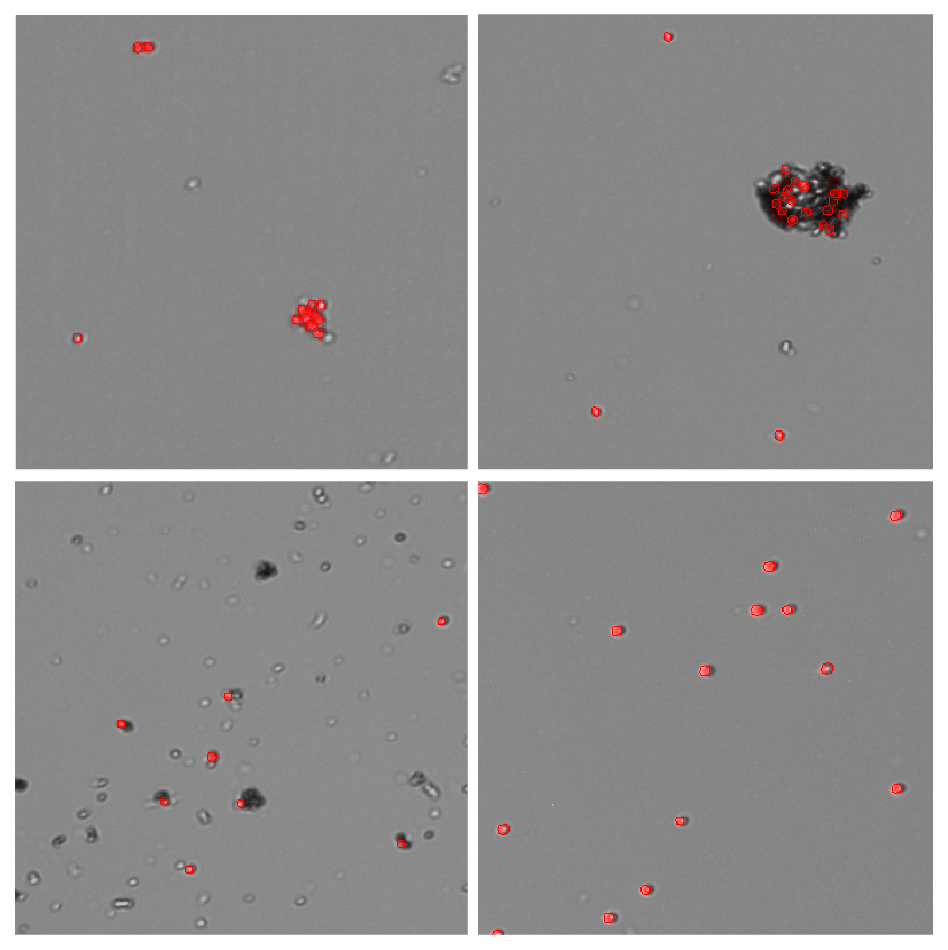Materials and Methods
Four different species of algae and culturing kits were obtained (Algae Research Supply. Carlsbad, CA). The two freshwater green algae species, C. Volgaris and C. Reinhardtii and two saltwater species, N. Oculata (a green algae) and P. Cruentum (a red algae), were grown in their corresponding media until they reached an appropriate density for counting. 1 mL aliquots were removed from each culture and for each measurement, 10 uL of algae cells were loaded onto the CellDrop. The samples were then counted in the PI app. All algae species were counted using the following protocol:
Algae Cell Protocol Settings
Table 1: Count Settings
| Count Application | PI |
| Chamber Height | 100 µm |
| Dilution Factor | 1 |
| Diameter (min) | 4 µm |
| Diameter (max) | 20 µm |
| Live Roundness | 100 |
| Dead Roundness | 1 |
Results and Summary
The red fluorescent channel on the CellDrop FL was able to detect the intrinsic chlorophyll fluorescence in all 4 algae species tested. The red channel in the PI app was primarily intended to count dead tissue culture cells and the count data of interest in this application is labeled: dead cell count and dead cells/mL. The mean diameter data may also be an important data point for many applications. For the purpose of algae counting, dead cell count and dead cells/mL can be translated to algae cells counted and algae cells/mL. Any live cells counted are likely extracellular debris and can be ignored for the purpose of this application. The images in Figure 1 below show the counted cells for each of the 4 species.
The CellDrop’s fluorescent counting algorithms accurately counted only the red fluorescent algae cells containing chlorophyll while ignoring debris as demonstrated well in the P. Cruentum and N. Oculata images. The C. Reinhardtii and P. Cruentum images nicely demonstrate the ability of the CellDrop to accurately count cells in clusters.
Automated counting of algae samples on the CellDrop FL removes operator variability from the process and speeds up the workflow. The CellDrop FL has powerful counting algorithms and customizable count settings to enable accurate counting of a wide variety of cell types, including algae species in multiple workflows.
25-MAY-2022




